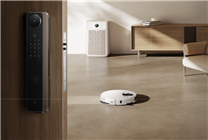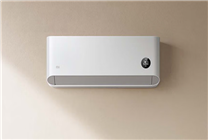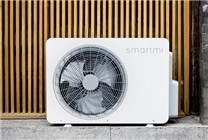Significant Growth in Smart Home Cleaning Robots: Market Insights for 2025
Summary:
- The global shipment of smart home cleaning robots surged by 33% year-on-year in the first half of 2025.
- Chinese brands dominate the market, with four out of the top five positions, led by Stone Technology.
- The rising demand for cleaning robots, particularly in overseas markets, highlights an evolving consumer preference.
According to the latest report by the International Data Corporation (IDC), the smart home cleaning robot market exhibited remarkable growth in the first half of 2025, with worldwide shipments reaching approximately 15.352 million units. This increase of 33% compared to the same period last year underscores a strong consumer shift toward automation in home cleaning.
Dominance of Chinese Brands
In a striking showcase of market strength, Chinese manufacturers have captured four out of the top five spots in the global rankings of smart home cleaning robots. Leading the charge, Stone Technology boasts a market share of 15.2%, firmly establishing itself as the frontrunner. Following closely is Ecovacs with a 13.7% share and Zhimi at 10.2%. Notably, Xiaomi occupies the fourth position with 5.8%, while iRobot, a non-Chinese brand, accounts for 7.4% of the market.
Market Segmentation and Concentration
Examining the segmented categories, sweeping robots emerged as the predominant force, representing 73.4% of total shipments in the first half of 2025. The concentration within the industry has also intensified, with the top five manufacturers collectively holding a substantial 64.8% market share—an increase of 4.8 percentage points year-on-year. This trend indicates not only heightened competition among top players but also a distinct consumer preference for established brands.
Strategic Expansion into Overseas Markets
Chinese manufacturers have effectively utilized an "online first" strategy to infiltrate global markets, subsequently transitioning into offline sales channels. This approach has proven particularly successful in Europe and North America, where categories like mowing robots have witnessed a surge in demand. Companies such as Nine and Zhimi report significant increases in overseas sales, mirroring the shifting consumer dynamics as more households adopt automated cleaning solutions.
Conclusion
The burgeoning smart home cleaning robot market underscores a transformative shift in consumer behavior, where convenience and automation are becoming increasingly essential. With leading Chinese brands commanding a significant share, the competitive landscape is likely to evolve further as manufacturers explore innovative technologies to enhance consumer experiences. As the industry continues to grow, monitoring these trends will be critical for stakeholders aiming to capitalize on the expanding market.
In summary, the future of smart home cleaning robots appears bright, driven by technological advancements and changing consumer needs.
By embracing these insights and understanding the competitive dynamics, businesses and consumers alike can navigate this exciting landscape of smart home technology effectively.






